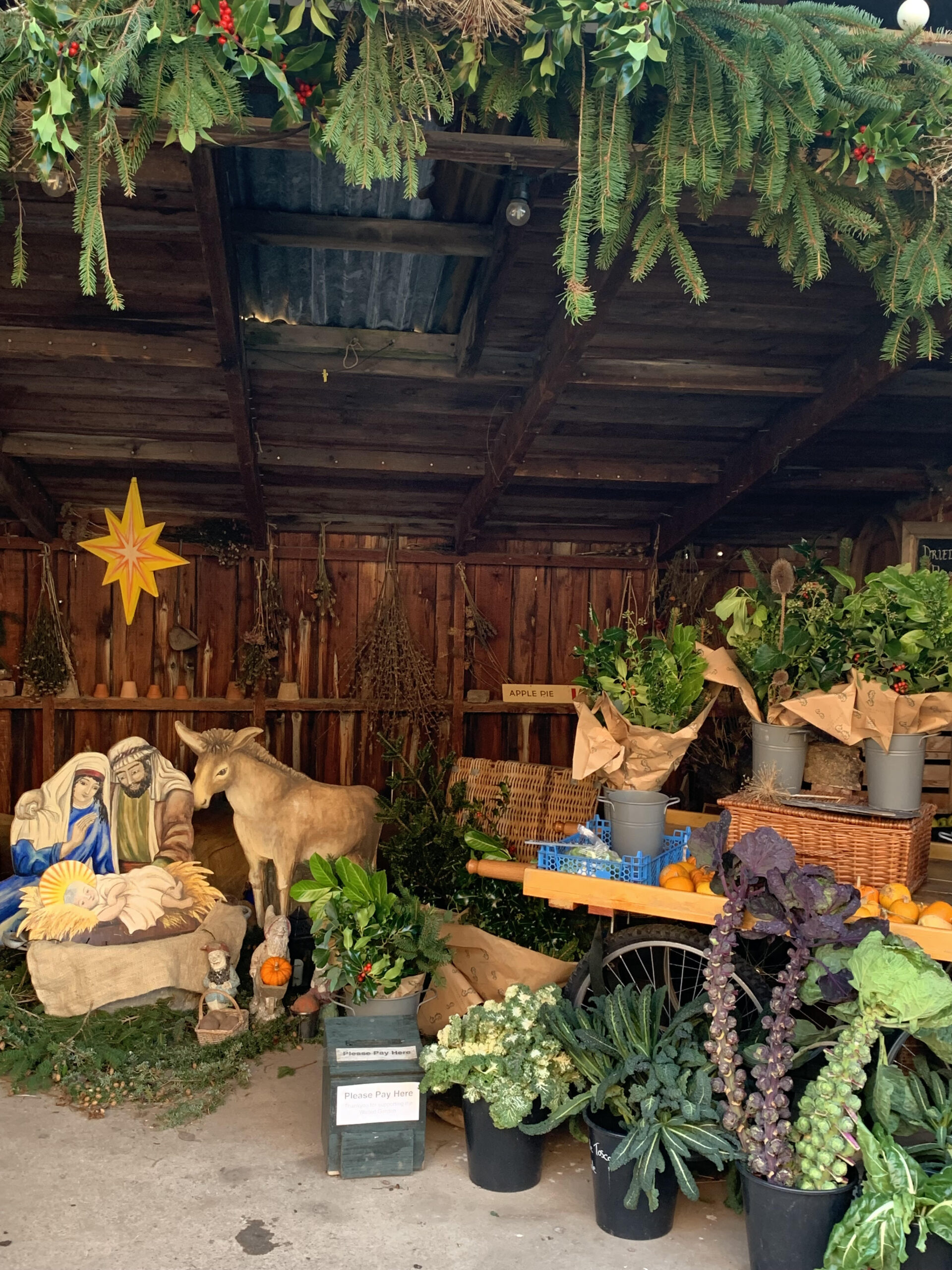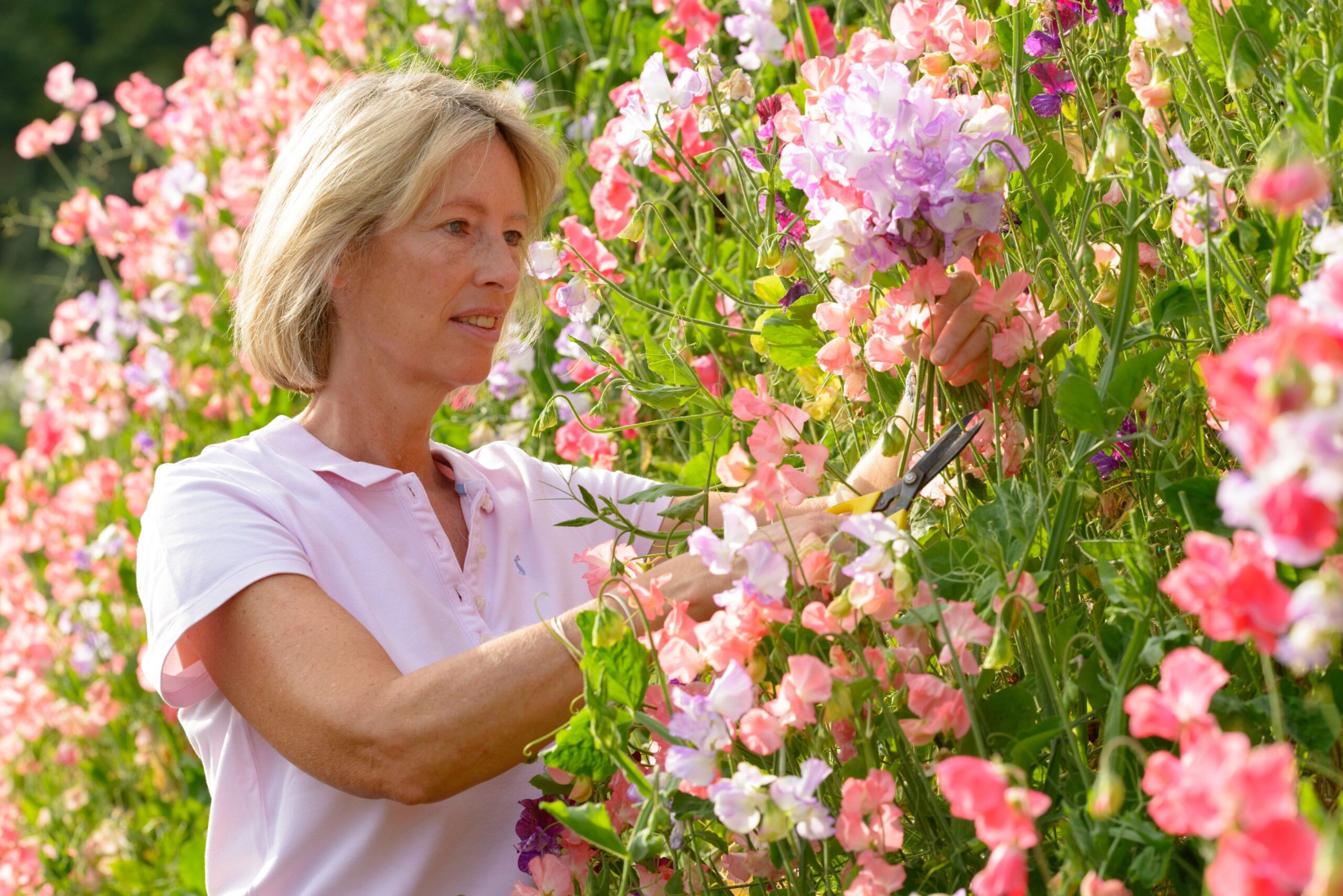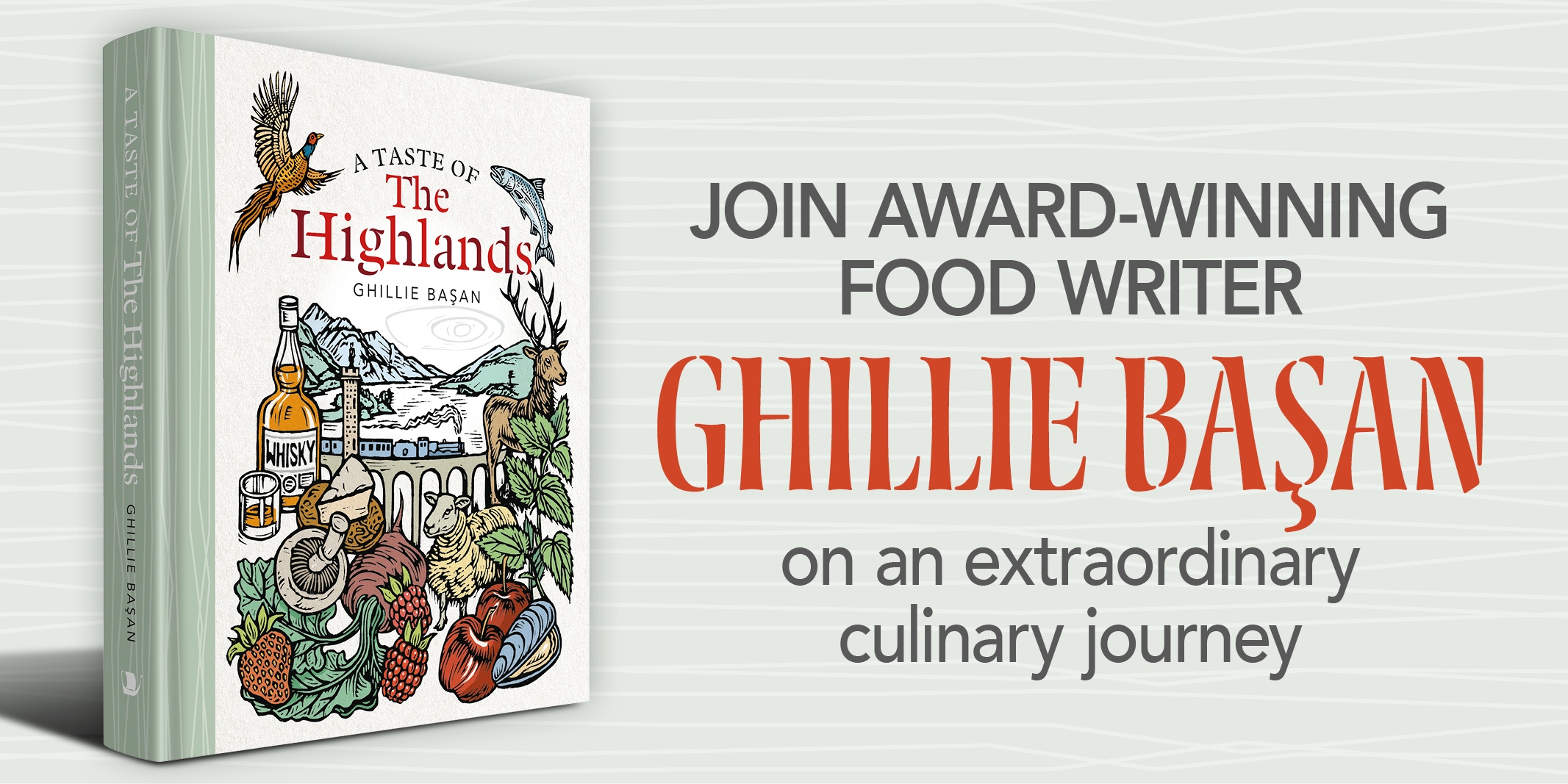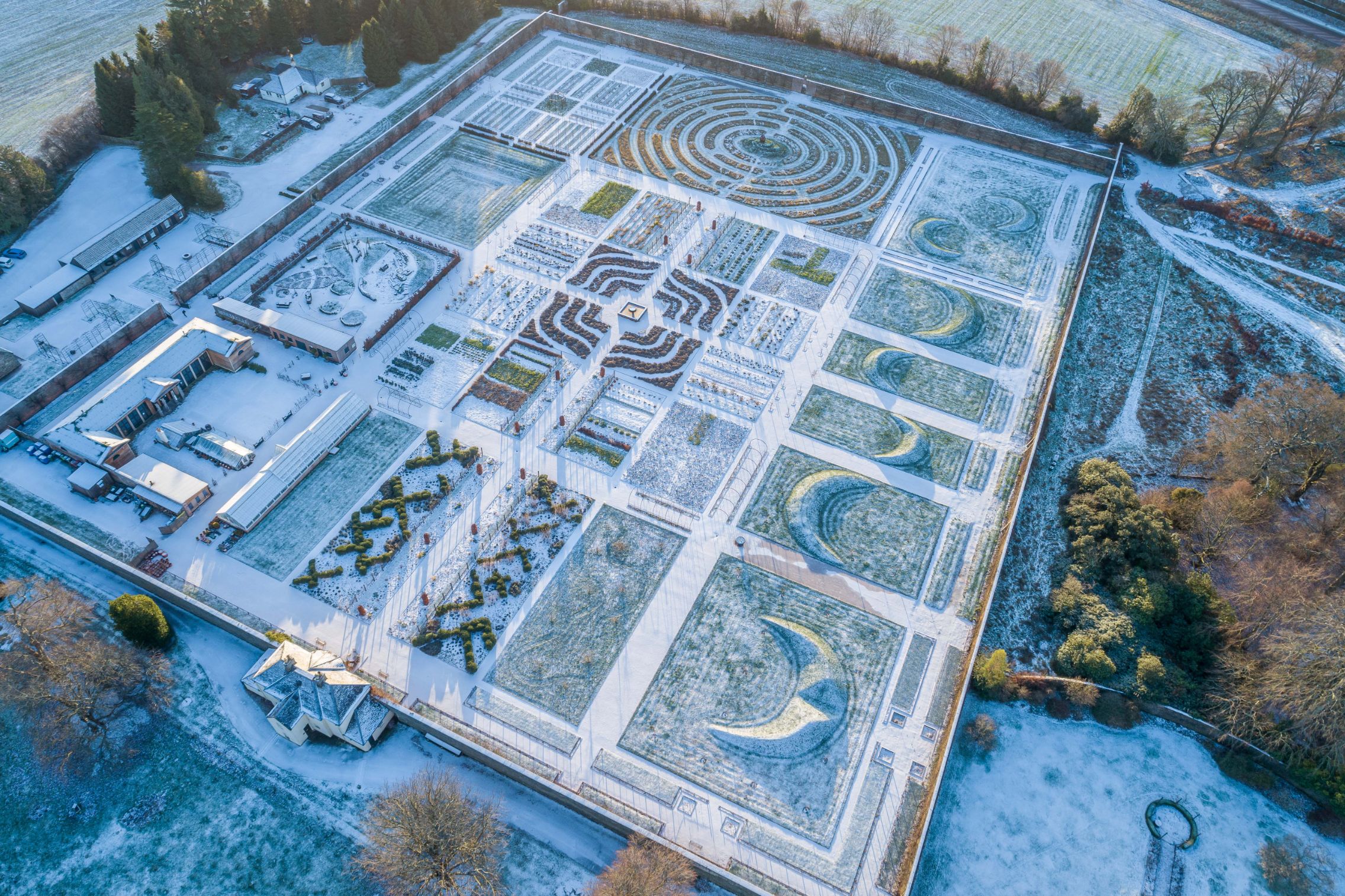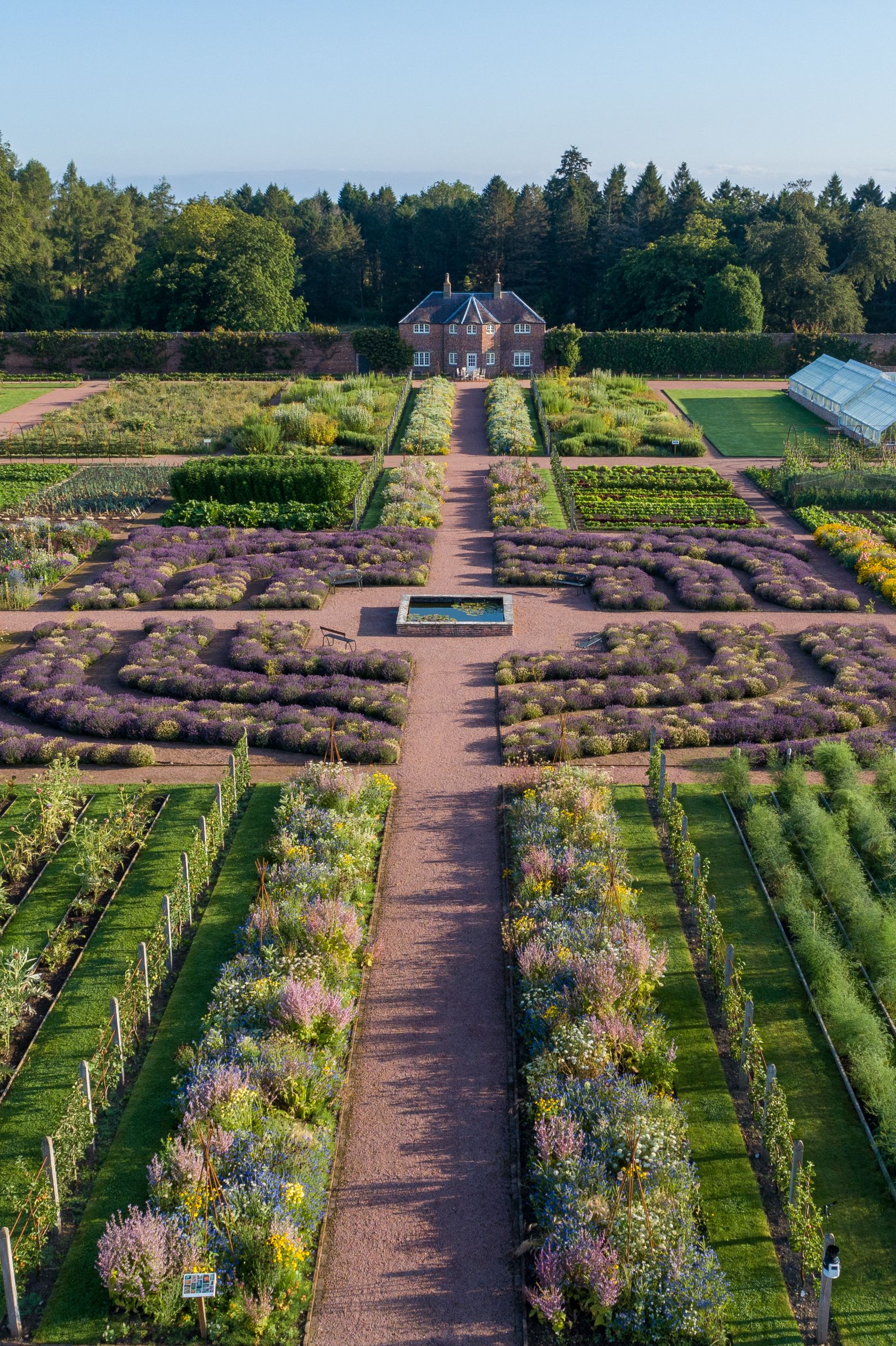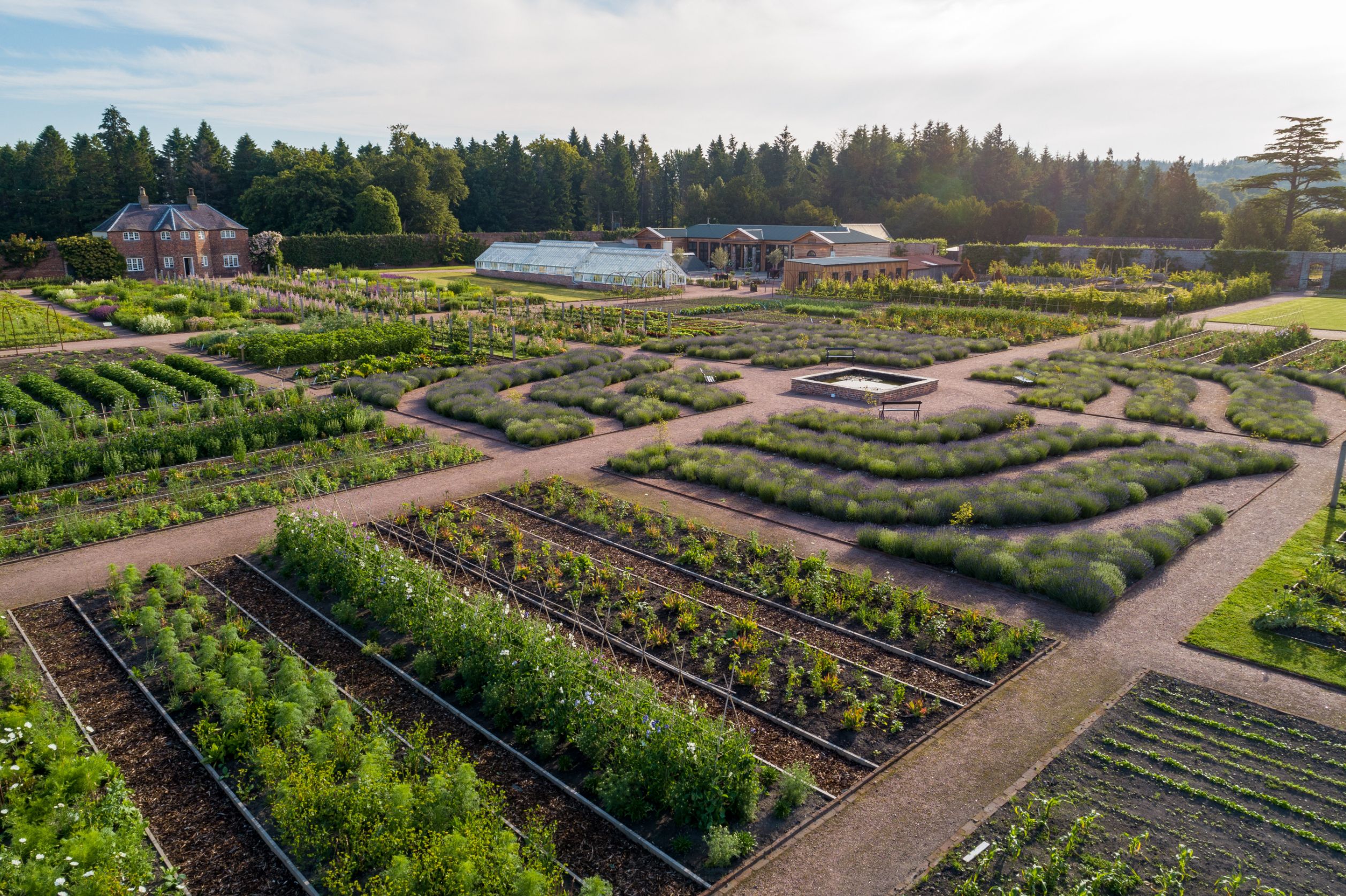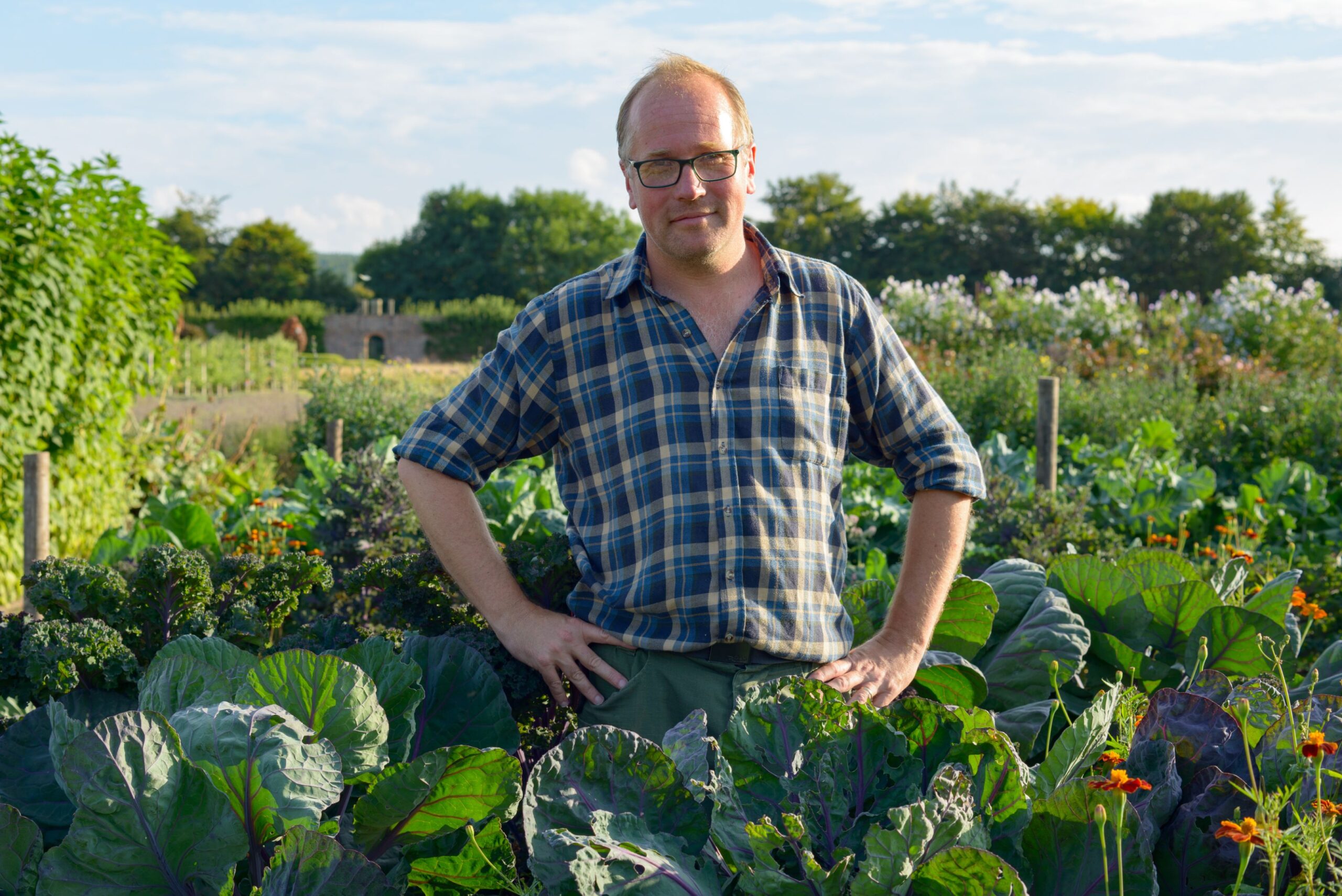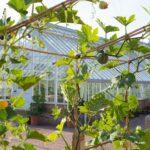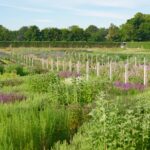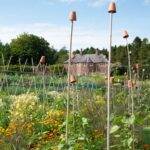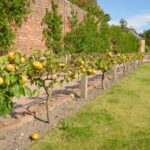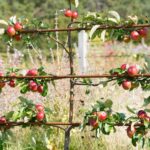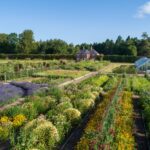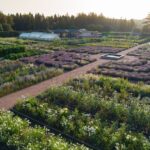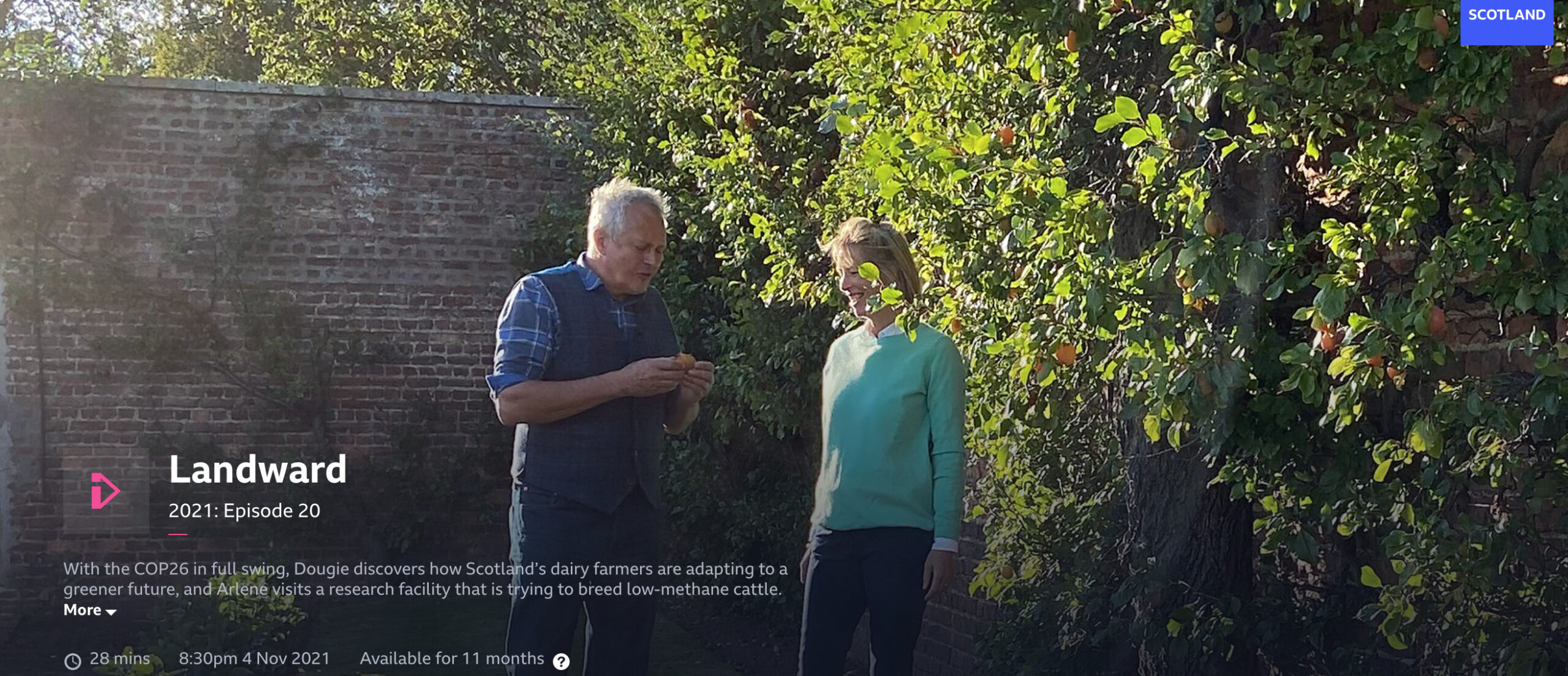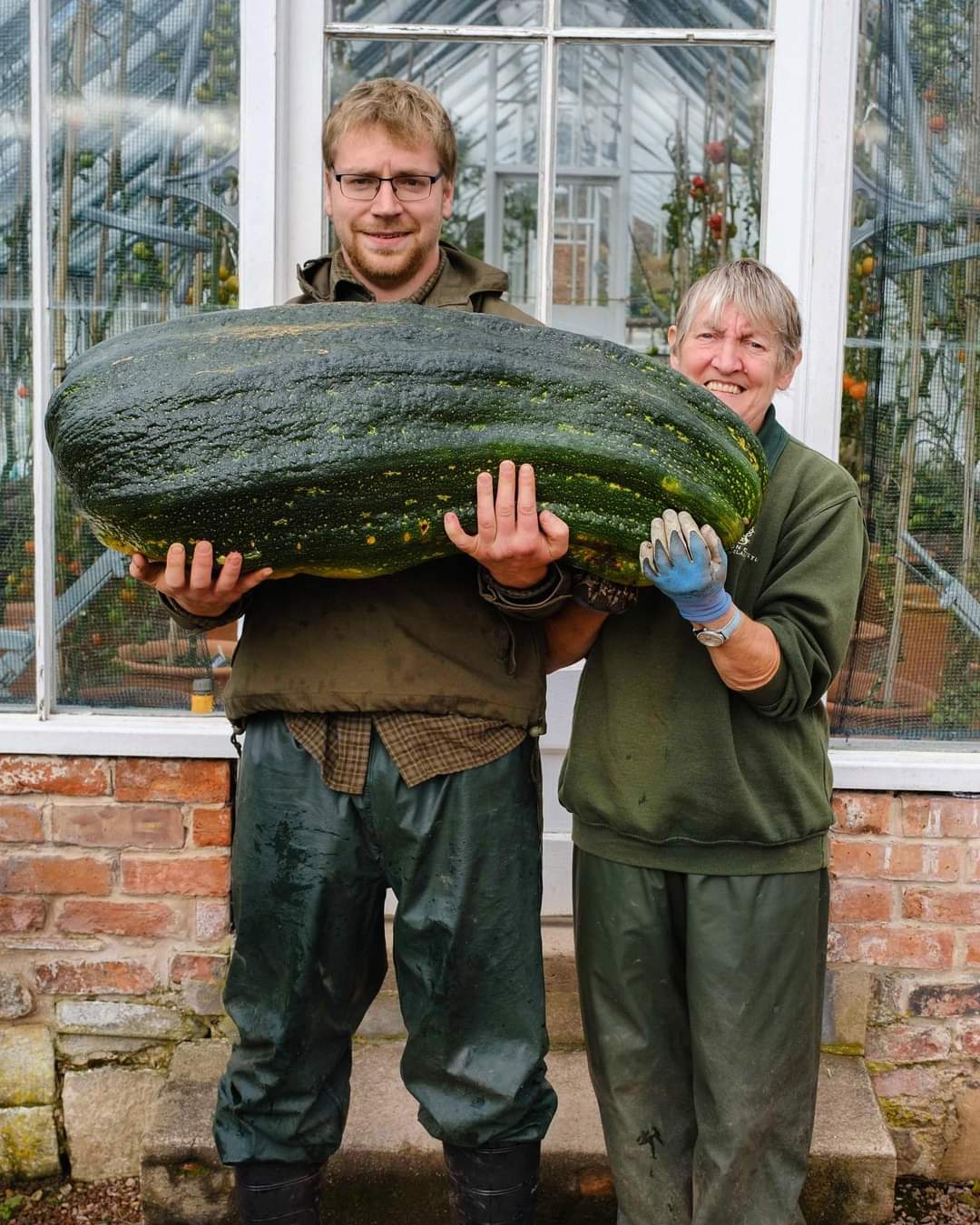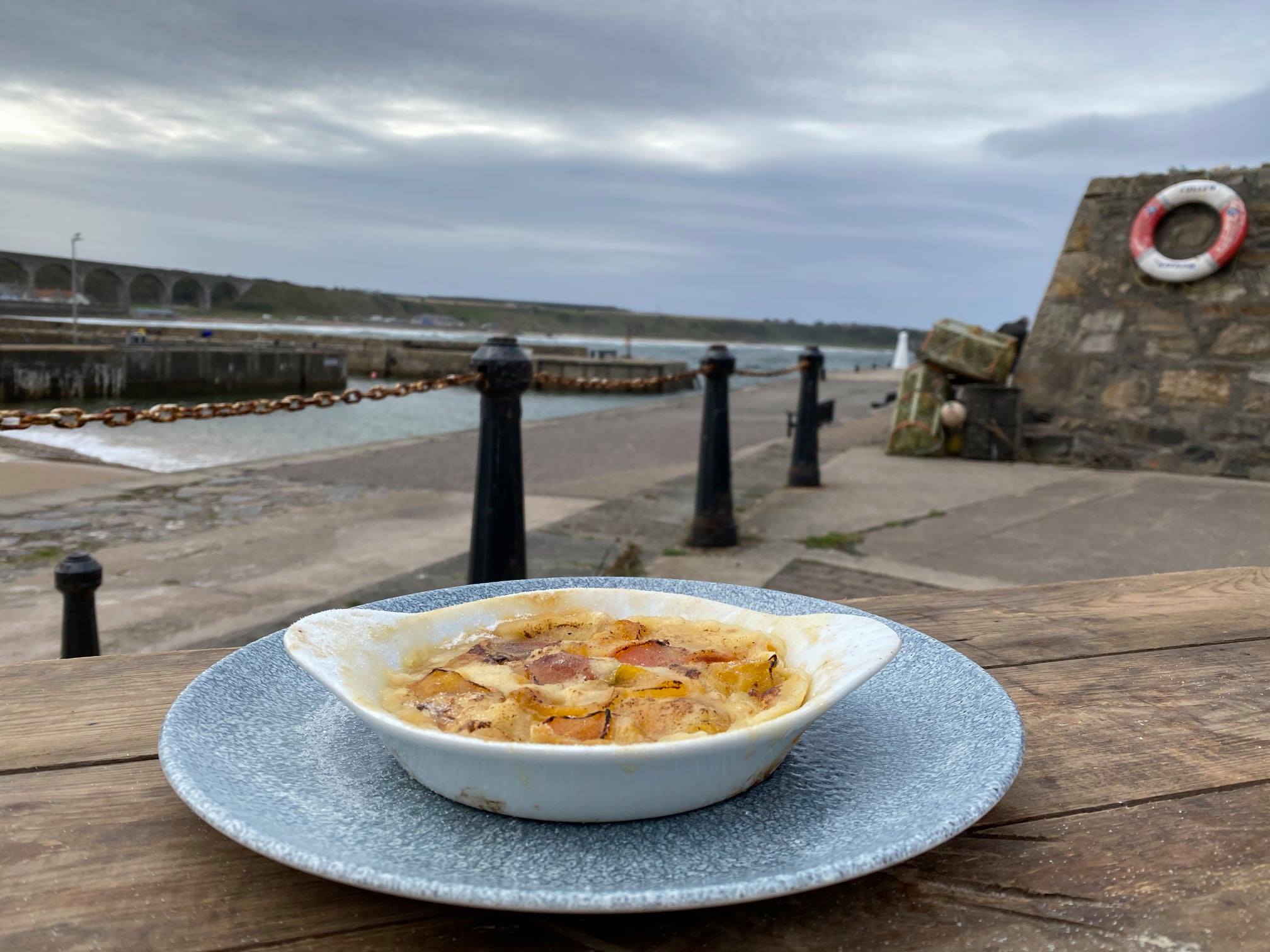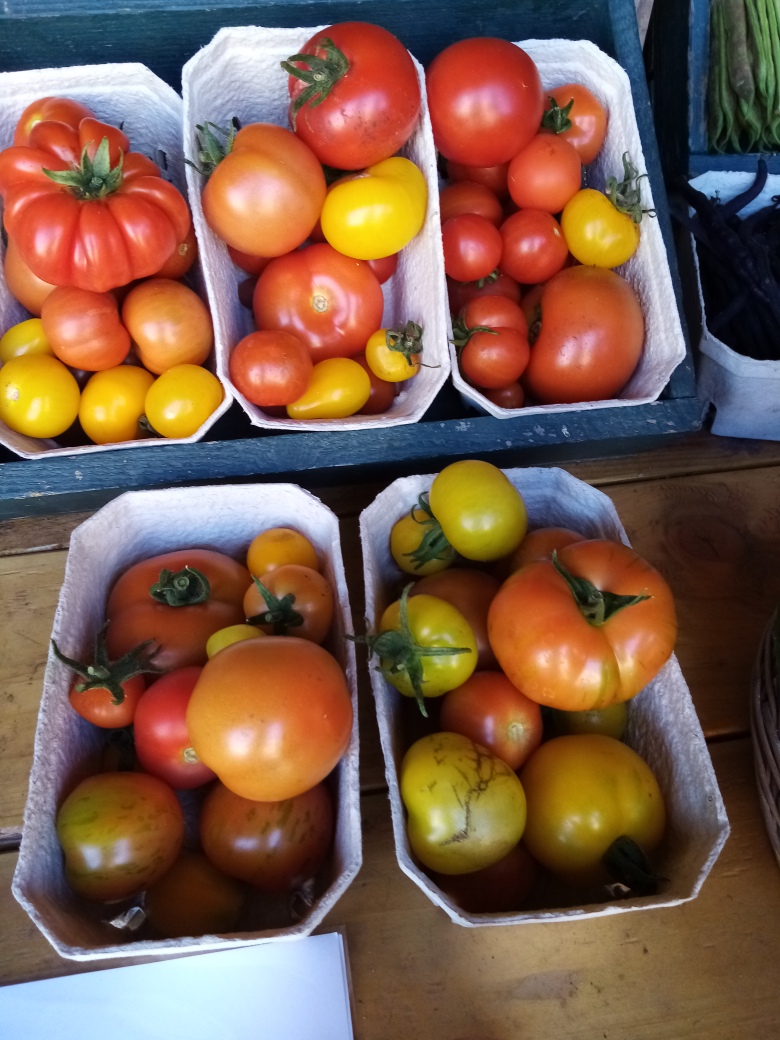The Autumn equinox has past but it seems that the late summer sun is still very much with us and most days are bright with the heat of the sun pleasantly warm. September has been a dry month, however, the gardens have welcomed the days of rain which have done no end of good. Never-the-less, time is passing, the nights are slowly drawing in as autumn quietly tip toes into the gardens tipping leaves with gold and providing the last harvests of the year.
September was a mild month; a real bonus for the gardeners as they collect the last of this year’s crops. The apples have not been so prolific but still sufficient in quantity to send to Elgin’s Orchards to be pressed into Gordon Castle fresh apple juice; a rich blend of flavours from the multitude of apple varieties growing against the garden walls. Such names as James Grieve, Laxton, Cox’s orange pippins or the pink fleshed bloody ploughman propagated in memory of a ploughman shot dead for stealing apples. Not forgetting ‘Beauty of Moray’ bred by John Webster head gardener here from 1850 till his death in 1890.
This month half a ton of Gordon castle apples and pears have been sent to Aberdeenshire to be made into next year’s supply of Seidear. It is the first Scottish cider made by keeving and the methode champenoise which takes over a year from harvest to bottle. This champagne alternative is proving popular with visitors to the gardens where it is for sale in the shop.
The ripe juicy sweet eating apples grown on the step over trees are for sale at the Potting Shed Shop.
There has been a bumper harvest of plums some of which Scottish chef Nick Nairn collected on a recent filming visit with the TV programme Landward. Nick had plans to cook with the plums in a cooking demonstration at Cullen harbour to be televised on the Landward programme during October.
A cornucopia of coloured squashes glow in the beds, some have been harvested. The giant marrows look promisingly large, almost ready to be lifted from their earthy beds. Ed the head gardener is keen to maximise growth so he will be watching and testing when the marrows have reached full growth by the fingernail test. It seems that if a fingernail can be pressed into the skin the vegetable is still growing!
In the large greenhouse the leaves have been stripped form the tall tomato plants allowing the abiding sun to warm and ripen the tomatoes hanging in profusion on the vines. Every day there are more and more to be picked and enjoyed. There is nothing like a sun ripened home grown tomato no matter the shape or colour. The chillies have been prolific this year and there are several different strengths on offer!!
Chrysanthemums and roses continue to bloom protected from the elements, ready for that all important bouquet. Melons have been grown here since Victorian time and this year they have yielded a small crop which is still ripening.
In spite of the cold start and dry conditions potatoes have been outstanding this year. The lack of rain in the early summer months has intensified their flavour and what a tasty selection there is. From rich creamy golden fleshed Charlottes, to the small salad potato Anya, which is a delicious alternative to the better known Pink Fir Apple. Then there is Isle of Jura, a great all round potato with fluffy rich flesh equally good to boil, mash or roast. Ratte is an interesting ‘fingerling’ potato propagated in France, however their origins date back to 1600’s when Spanish conquistadors brought such tubers from the New World. By 1800 la Ratte potatoes were a favourite with top chefs. Immigrants carried them to America where today they are greatly prized.
Buttery moist golden flesh with a hazelnut flavour, boil, steam, bake, roast they make delicious potato puree. Try making mini hasssleback potatoes with lemon and parsley or serve in salads with garlic, herbs, olive oil and wine vinegar .
From the trial beds Shetland Black potatoes have been outstanding this year. Native to Shetland they are said to have come from a 1588 Armada shipwreck. Dark skinned, intense dry purple veined flesh and bursting with flavour. Watch they boil quickly probably best cooked in their jackets, sauté roast or make crisp chips. Delicious.
The Romanesque cauliflowers were a big success and the drumhead cabbage are hearted and almost ready to cut. High burgundy potatoes are soon to be dug. A novelty potato boasting pink flesh and bright pink skins, make colourful mash, roasts and crisps. Gardener Liz is looking forward to growing a selection of different vegetable varieties in the trial beds next year.
The brassicas continue to provide a rich harvest, A variety of kales such as cavolo nero and emerald ice, beside which the savoy cabbages Tundra and January Kings (they ripen early here) have grown well. Purple sprouting broccoli has been cut already and it will continue to sprout well into the autumn.
Large bunches of hand tied everlasting flowers such as helichrysum and amaranthus hang from the rafters at the potting shed, dried and ready for sale or to be added to traditional wreaths later in the year.
The Potting Shed shop is open daily from 10am till 4pm and the restaurant is open Wednesday to Sunday serving fresh local food including garden produce where possible. Monday and Tuesday takeaways are available from the kiosk beside the Potting shed.
Come visit the gardens to feel the warmth of the maturing sun radiated from the ancient walls and wander through the beds of colourful flowers, especially dahlias which have come into their own this month illuminating the garden with brightness. A lasting memory to picture in your mind’s eye in the darker months ahead.
Potatoes nicoise
Serves 2
1 tablespoon olive oil
225g (8oz) diced potatoes
1 red pepper – cored and chopped
4 spring onions – trimmed and chopped
1 clove garlic – peeled and chopped
1 sprig rosemary – remove the leaves and chop finely
1 large tomato – peeled and chopped
12 pitted black olives – halved
Pinch of chilli flakes
Sat and ground black pepper
Heat the oil in a medium sized pan. Add the potato, pepper, spring onions and garlic and stir fry over a medium heat for 3 or 4 minutes. Reduce the heat, cover the pan and steam cook for a further 2 or 3 minutes to soften the potatoes. Add the rosemary, tomato and olives along with a generous pinch of chilli flakes. Stir well and cook a further 2 or 3 minutes to heat through. Season, to taste, with salt and pepper and serve hot as a light snack or to accompany grills Anchovy lovers may like to add a few finely chopped along with the tomatoes and olives. Delicious cold as a salad too. To make a more substantial salad meal you can add some flaked tuna.
Kale pesto
75g ( 2 ½ oz) kale – chopped
2 cloves garlic – peeled and crushed
30g (1oz) pumpkin seeds
25g (scant 1 oz) basil leaves
6 tbsp ( approx 90mls) olive oil
3 tbsp (45ml) lemon juice
30g (1oz) pecorino or other hard cheese finely grated
Blitz the ingredients adding water if needed to make a softer consistency.
Store in the fridge and use within four days.
Ginger crumble apple cake
225g (8oz) self raising flour
1 teaspoon baking powder
1 teaspoon ground ginger
60g (2oz) caster sugar
115g (4oz) butter
30g (1oz) syrup
60g (2oz) porridge oats
2 eggs – beaten
160mls (just over 5 fl oz) single cream or creamy milk
1 large cooking apple – peeled and chopped (150g approx)
Topping:-
½ pkt crushed ginger nut biscuits
30g (1oz) Hamlyn’s porridge oats
60g (2oz) butter melted
Heat the oven to 160C (140C fan) 325F, Gas 3. Oil a baking tin 30cmx20cm (12inx8in). Put the dry ingredients into a mixing bowl and rub in the butter.
Stir in the beaten egg and cream or milk to make a soft dropping consistency. Fold in the apples and spread evenly in the prepared baking tin. Mix the melted butter with the other topping ingredients and scatter over the cake. Bake in the middle of the oven for 25 to 30 minutes or till the point of a skewer inserted in the middle comes out cleanly. Cool in the tin. Cut into squares and enjoy freshly baked.
Cinnamon spiced Autumn apple cake
This recipe is based on a traditional Spanish/Moorish recipe. You can also use plums, pears, peaches or mango for the topping – or a mixture of fruits, what ever you like. Remember to add the lemon juice, vanilla and cinnamon.
Drizzle with water ice made with fresh lemon or orange juice to finish the cake.Makes a cake 30cm (12in) x 18cm (7in)
Topping:-
2 sharp tasting eating apples – peeled cored and sliced
1 teaspoon vanilla Essence
1 teaspoon ground Cinnamon
Juice of a fresh lemon
For the cake:-
175g (6oz) butter
115g (4oz) caster sugar
60g (2oz) light soft brown sugar
175g (6oz) sifted self raising flour or plain flour sifted with 2 teaspoons baking powder
3 large eggs – beaten
Water ice to finish made with fresh lemon or orange juice
Heat the oven to 180C (160C fan), 350F, Gas 4. Oil and line the tin. Prepare the topping by mixing the sliced fruit with vanilla, lemon juice and cinnamon. Cream the butter and sugar till very light a fluffy and pale in colour. Beat in the eggs and then fold in the sifted flour. Pour into the prepared tin and spread evenly. Top with the sliced fruit and bake for 25 to 30 minutes till risen and springy to touch and the point of a skewer inserted in the middle comes out cleanly. Cool in the tin then drizzle with water icing. Enjoy freshly baked.





























 An urgent job is to replace the rosemary hedges which divide the areas of the herb garden. They were adversely affected by very low temperatures during the winter of 2021. At last five hundred healthy young bushes have arrived to replace them. As the old bushes are removed and the new ones take their place imagine the wonderful aromas which will pervade the gardens!
An urgent job is to replace the rosemary hedges which divide the areas of the herb garden. They were adversely affected by very low temperatures during the winter of 2021. At last five hundred healthy young bushes have arrived to replace them. As the old bushes are removed and the new ones take their place imagine the wonderful aromas which will pervade the gardens! A fabulous burst of colour ranunculus (a form of buttercup) is to be found in the large greenhouse. The Queen of Sweden and Roald Dhal roses opposite are budding profusely. Roses too are on the way.
A fabulous burst of colour ranunculus (a form of buttercup) is to be found in the large greenhouse. The Queen of Sweden and Roald Dhal roses opposite are budding profusely. Roses too are on the way. The Potting shed shop also has a huge selection of plants for sale. Lettuces, tomatoes, vegetables, chillies, herbs, perennial and annual flowers ready to plant in your own garden as the growing season begins in earnest. Don’t delay now is the time to get them into the ground!
The Potting shed shop also has a huge selection of plants for sale. Lettuces, tomatoes, vegetables, chillies, herbs, perennial and annual flowers ready to plant in your own garden as the growing season begins in earnest. Don’t delay now is the time to get them into the ground!












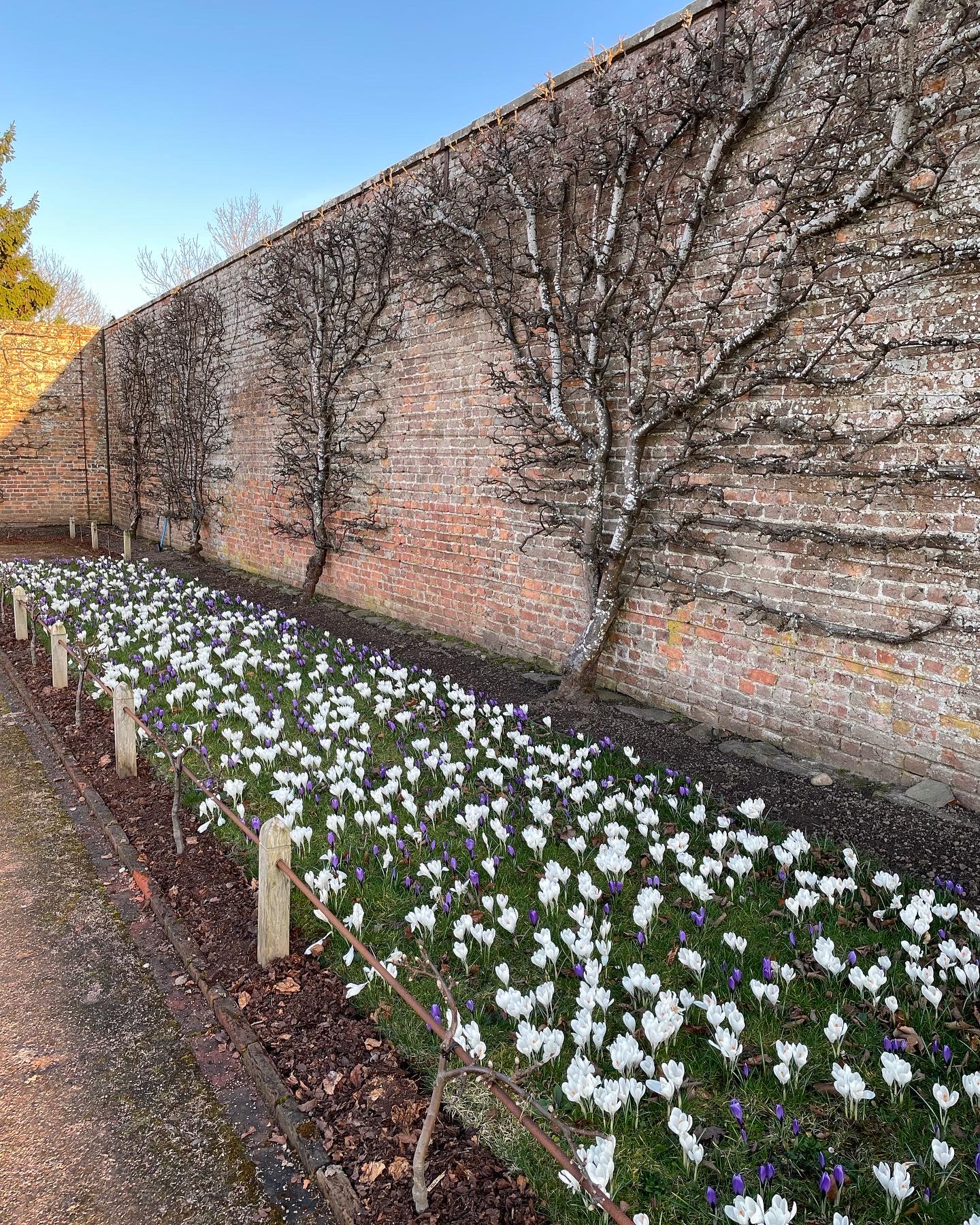
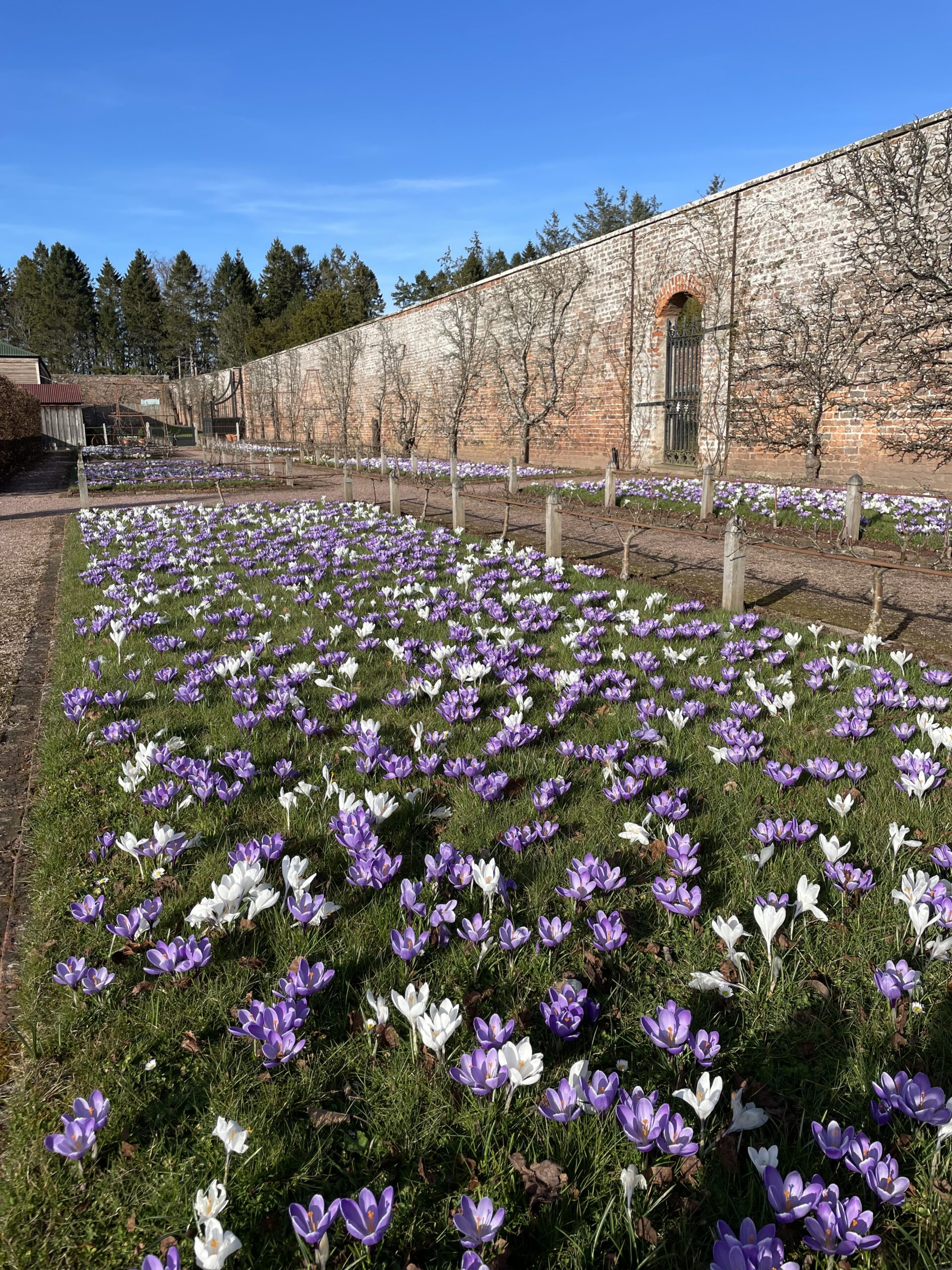
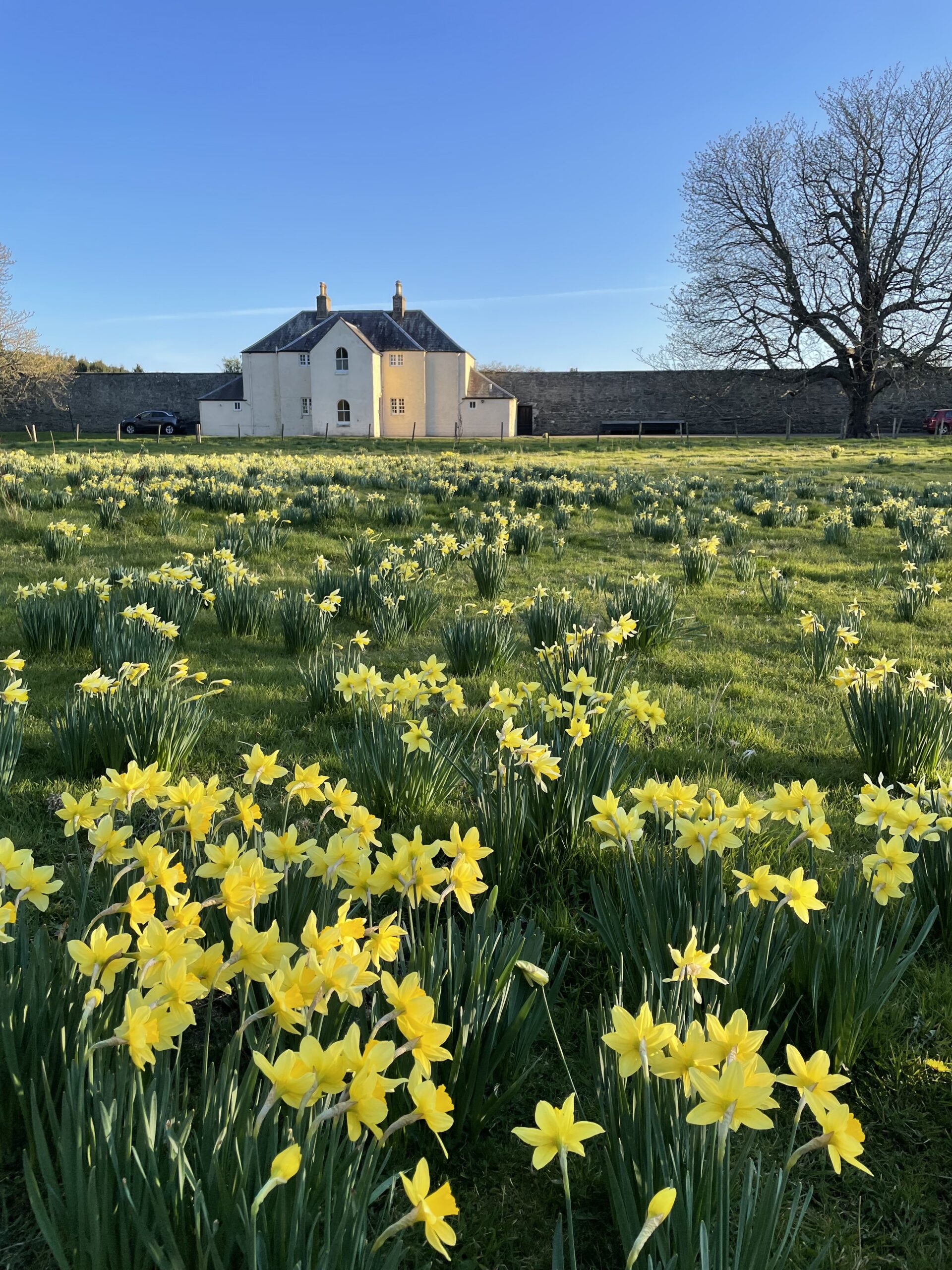
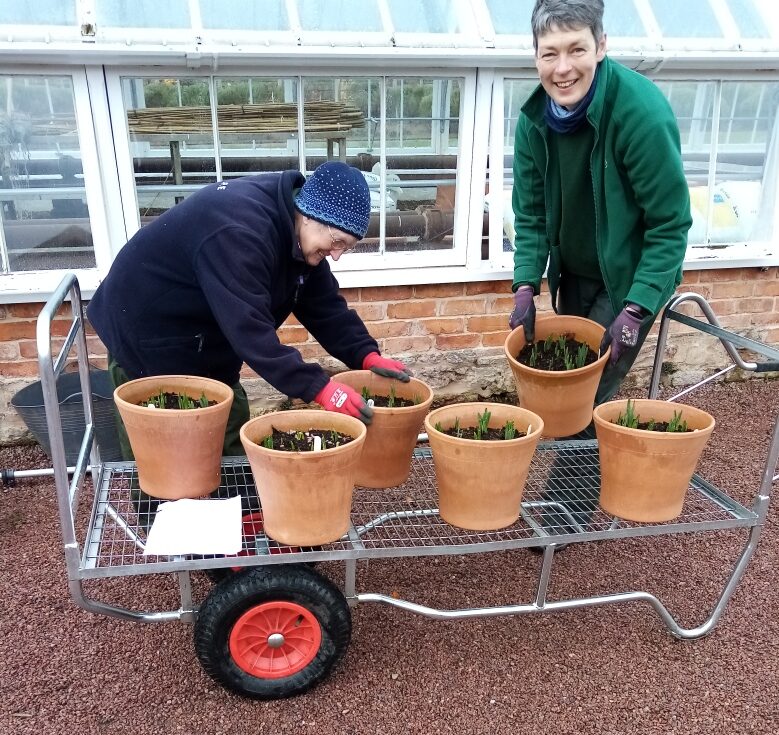
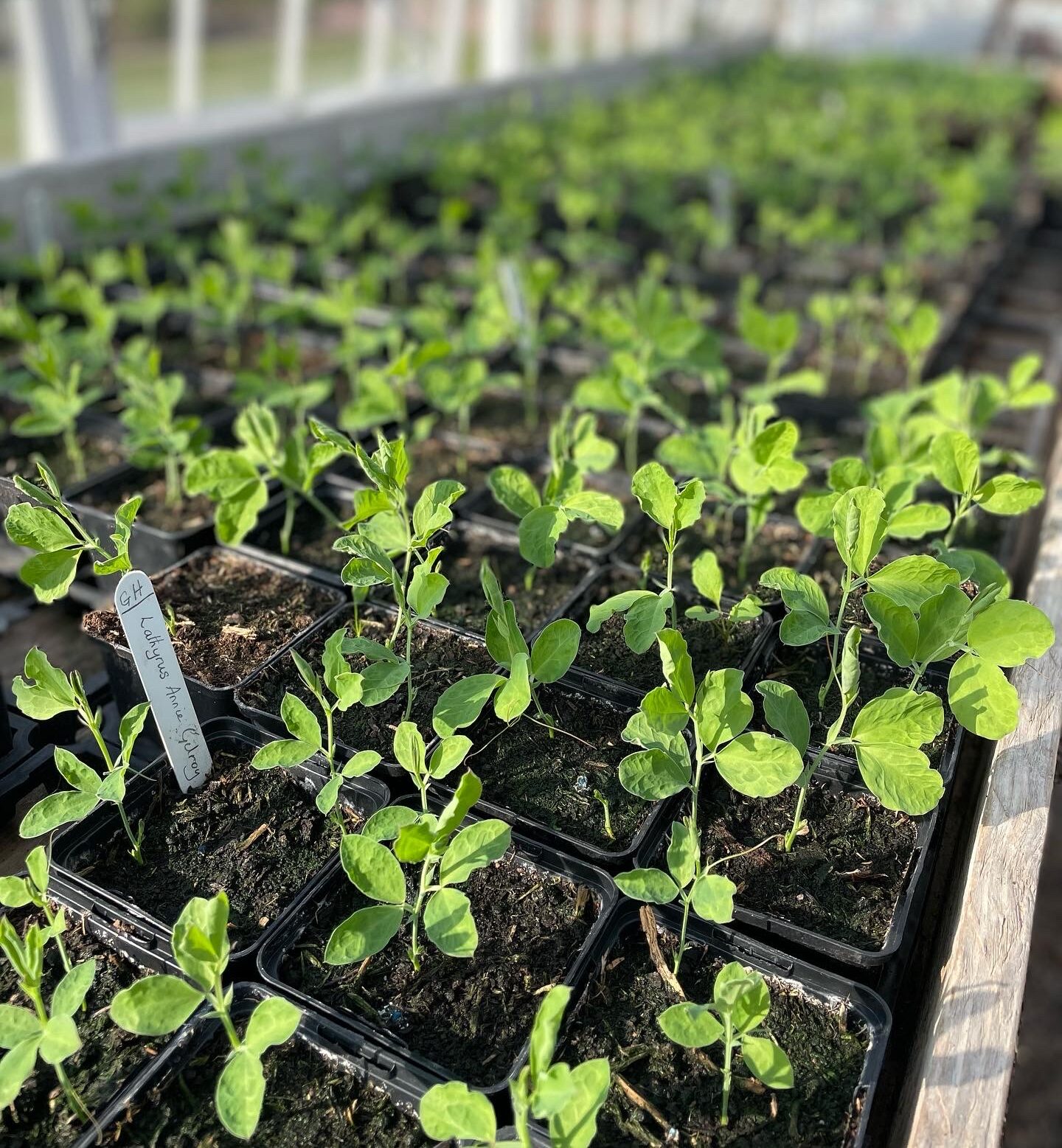 Mother’s Day approaches and with that in mind Gordon Castle Gardens have created beautiful bouquets of spring flowers. For sale at the gardens or available to order on line they can be delivered in the Elgin / Fochabers area or collected from the gardens.
Mother’s Day approaches and with that in mind Gordon Castle Gardens have created beautiful bouquets of spring flowers. For sale at the gardens or available to order on line they can be delivered in the Elgin / Fochabers area or collected from the gardens.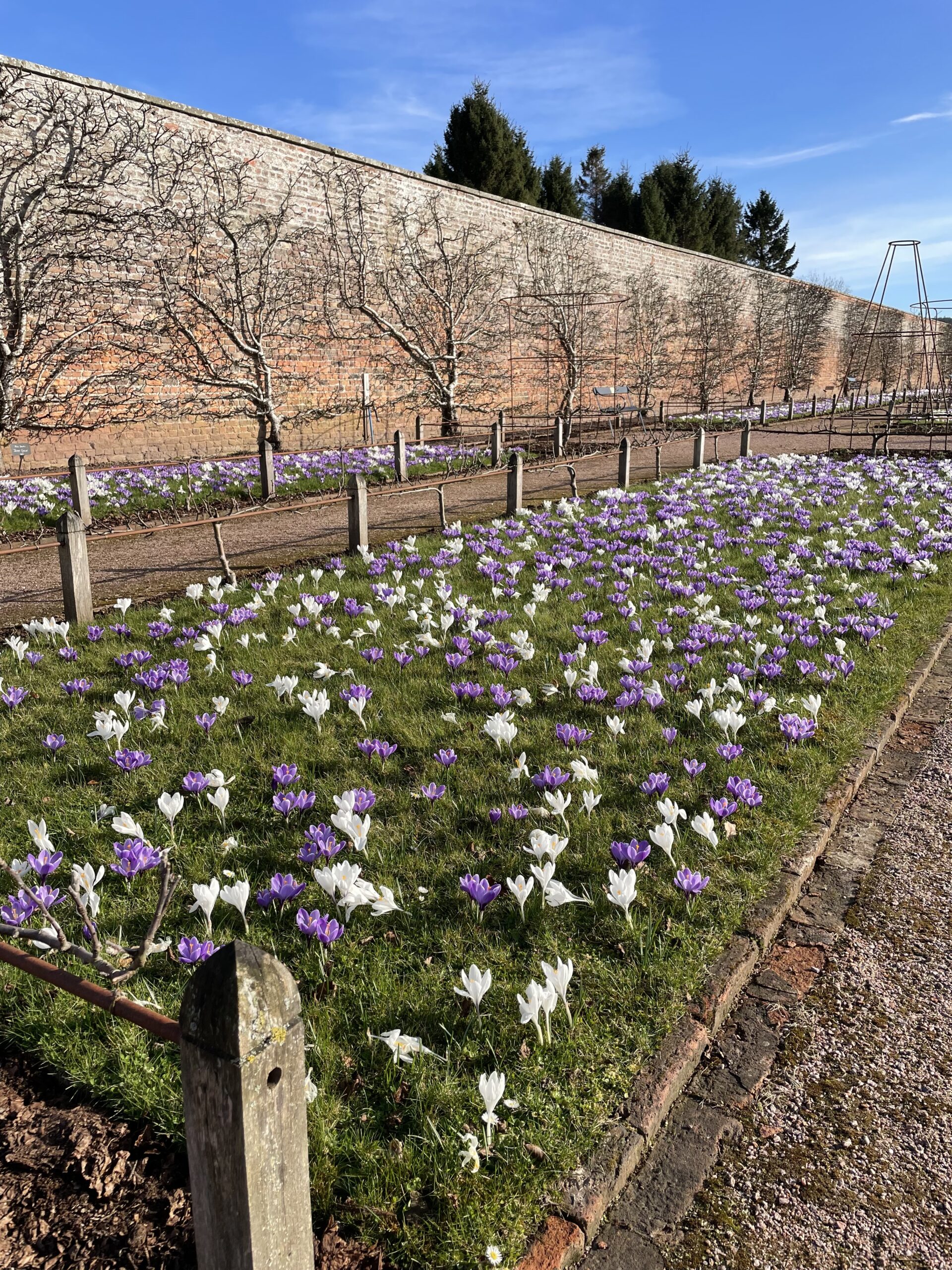 A cake to celebrate the arrival of spring!
A cake to celebrate the arrival of spring!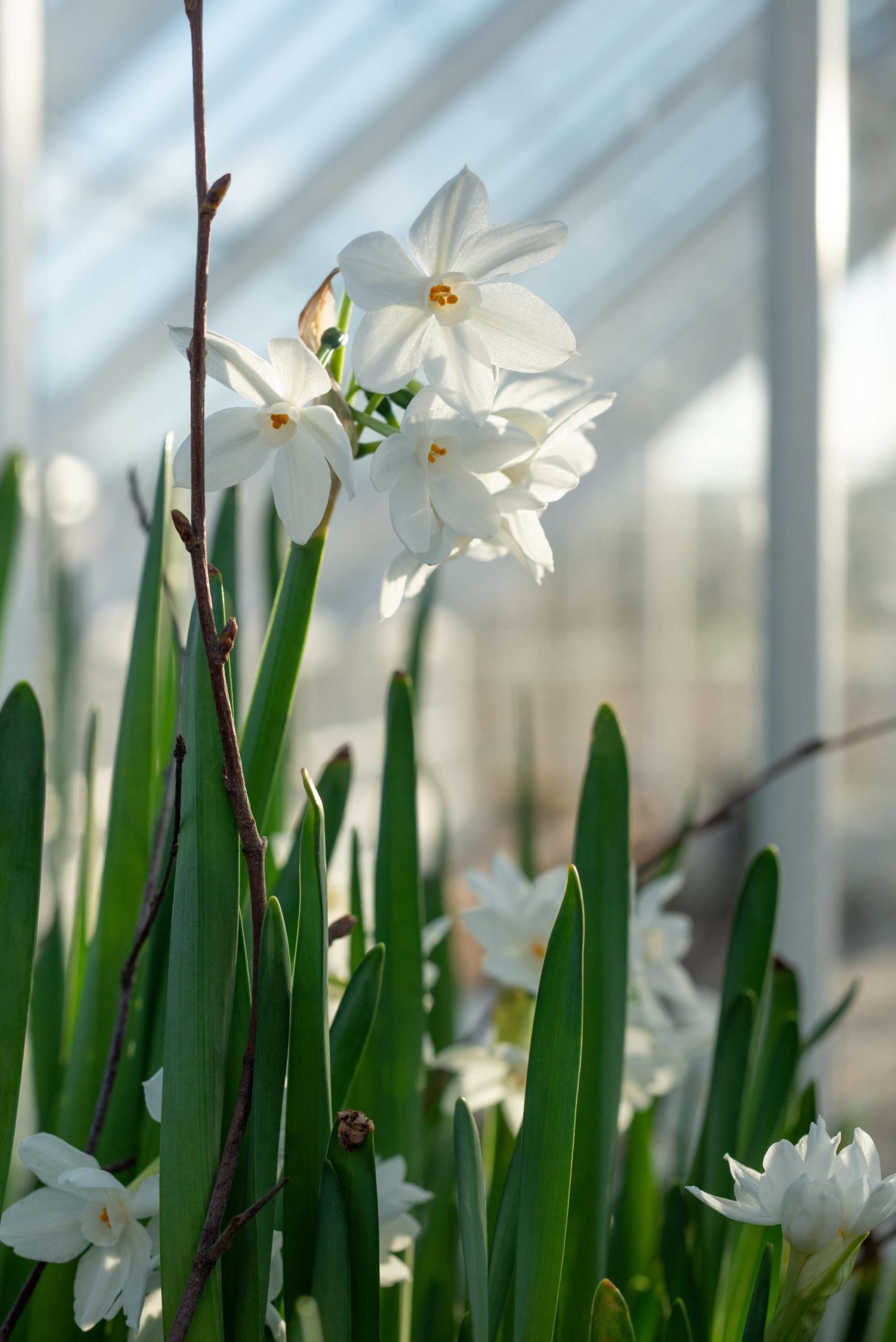
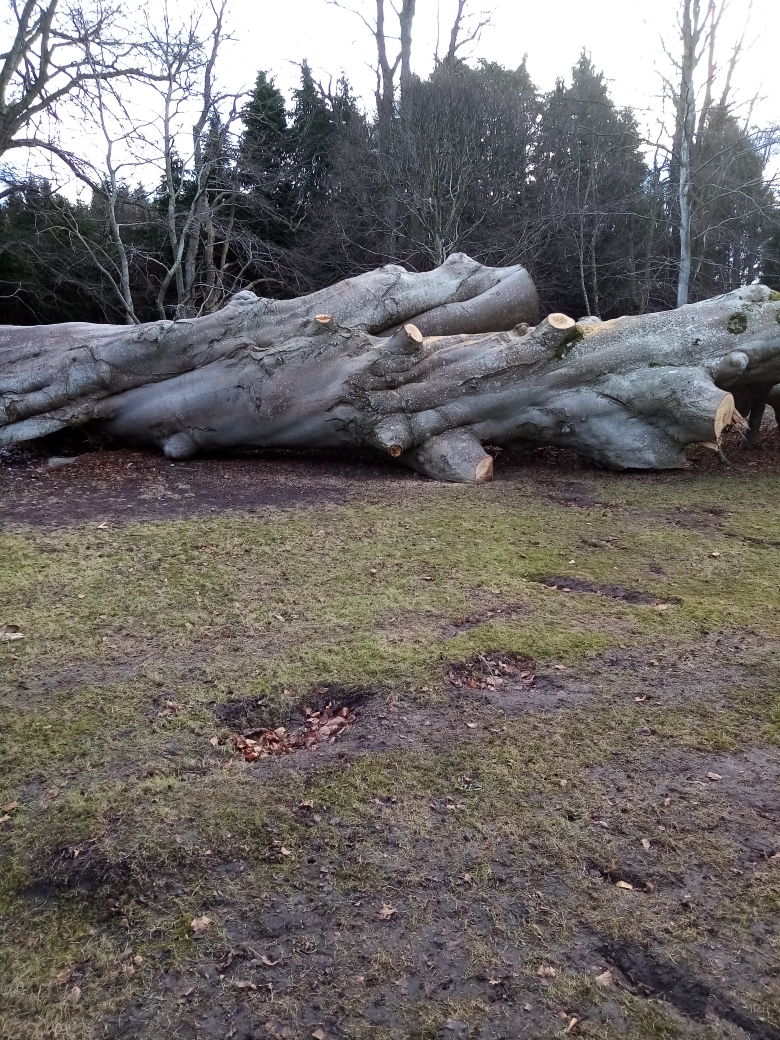
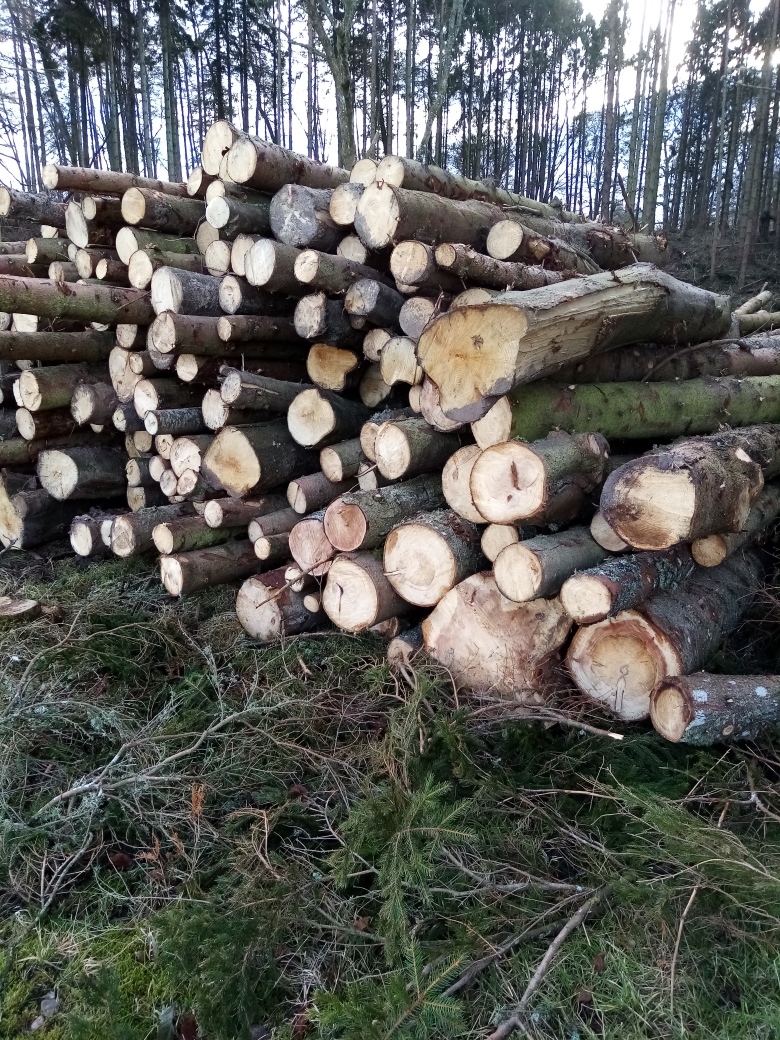
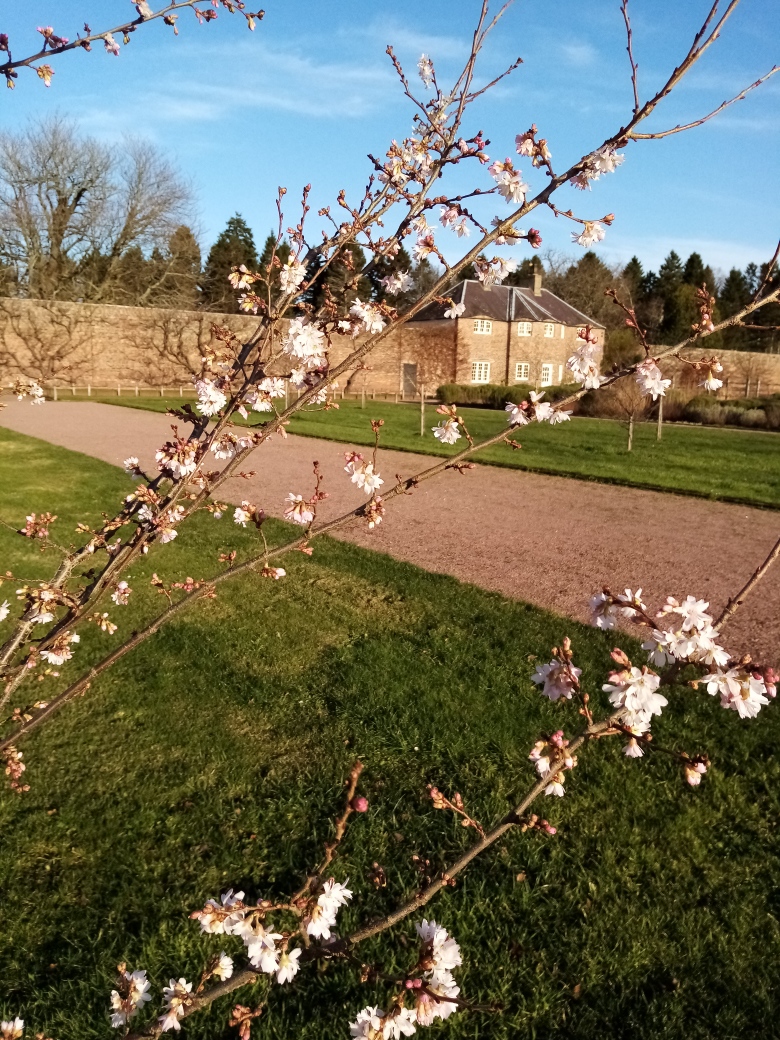
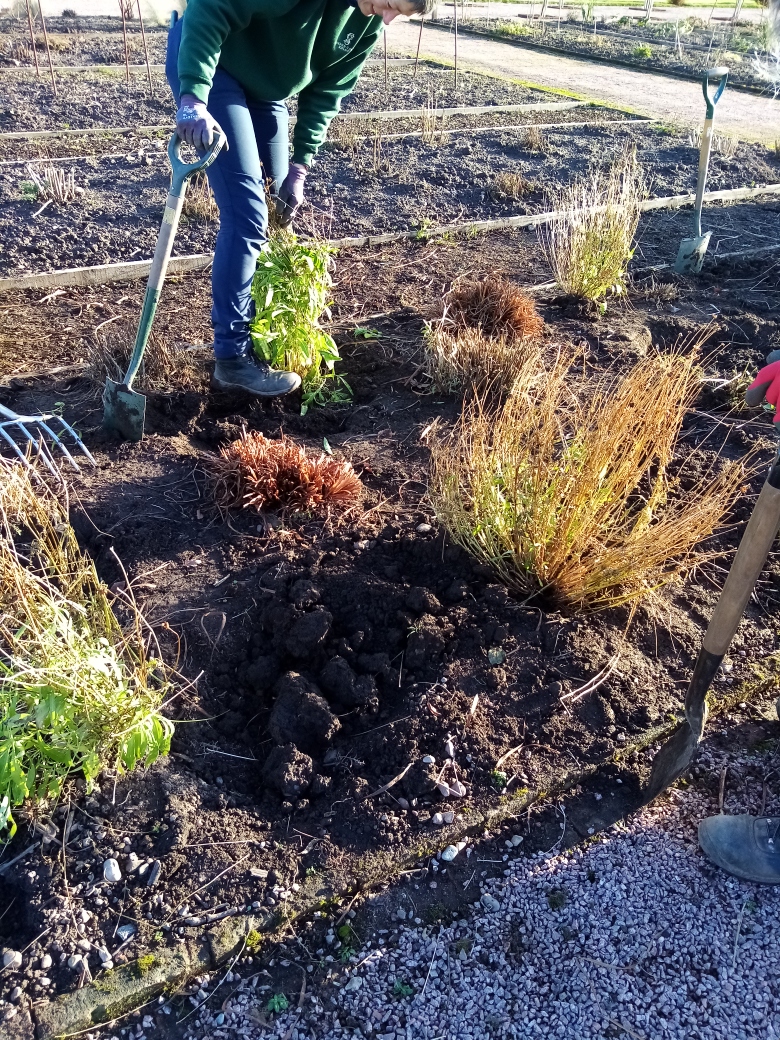
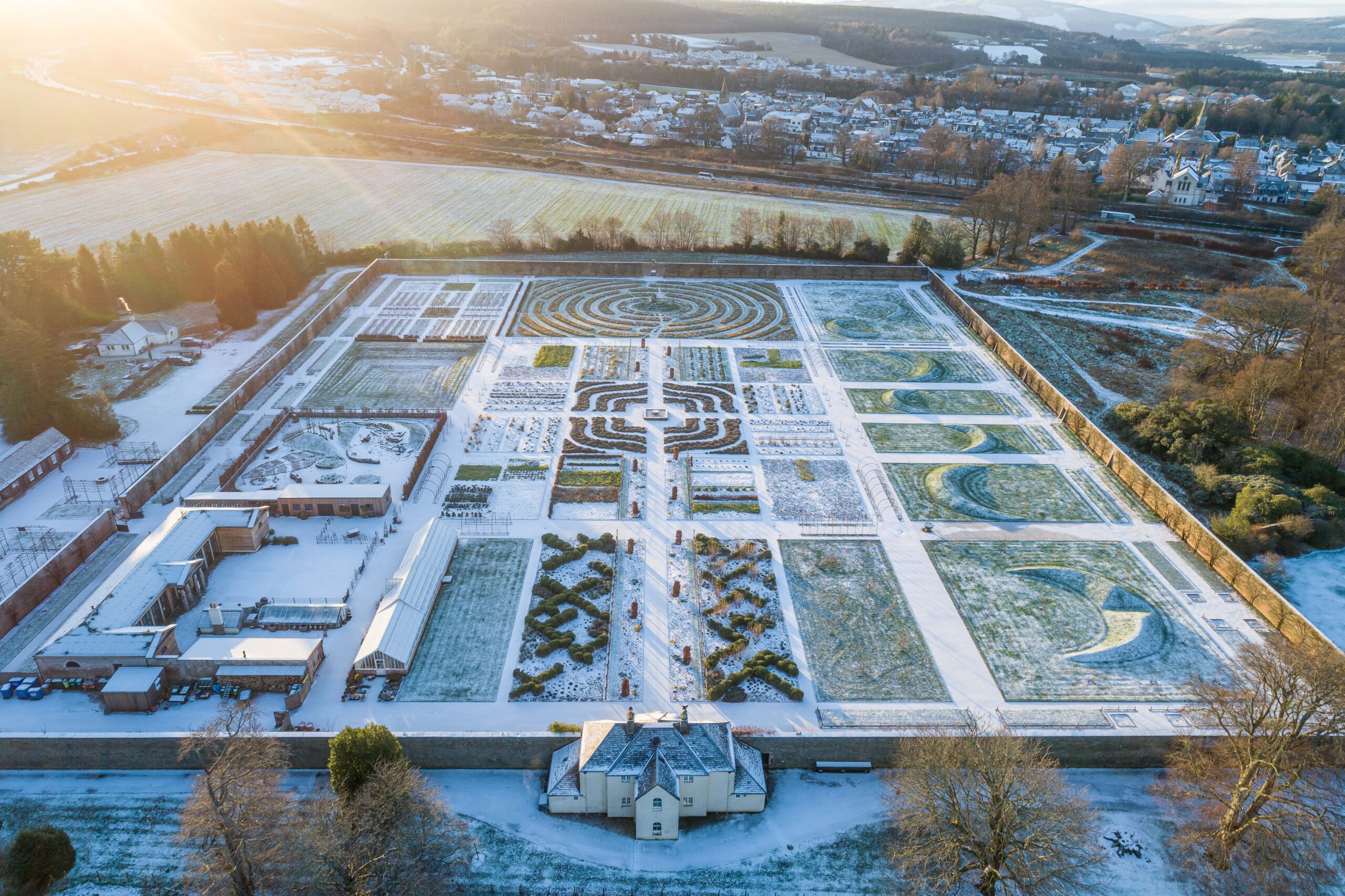
 Everyone at the gardens and many beyond are celebrating the prestigious award of being voted best historic walled garden in Britain. However, the ferocity of storm Arwen brought a bit of a wake-up call. Sadly hundreds of ancient trees did not survive, one of the oldest, a gigantic beech tree, fell across the avenue and is thought to be over 300 years old. It was completely hollow inside and it makes one wonder about tales of how Robin Hood evaded capture, it was said, by hiding in such a tree in Sherwood forest!
Everyone at the gardens and many beyond are celebrating the prestigious award of being voted best historic walled garden in Britain. However, the ferocity of storm Arwen brought a bit of a wake-up call. Sadly hundreds of ancient trees did not survive, one of the oldest, a gigantic beech tree, fell across the avenue and is thought to be over 300 years old. It was completely hollow inside and it makes one wonder about tales of how Robin Hood evaded capture, it was said, by hiding in such a tree in Sherwood forest!